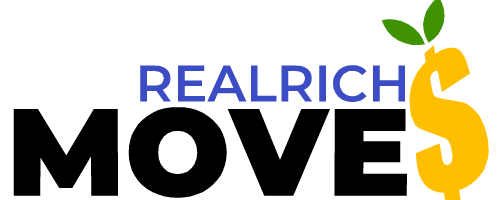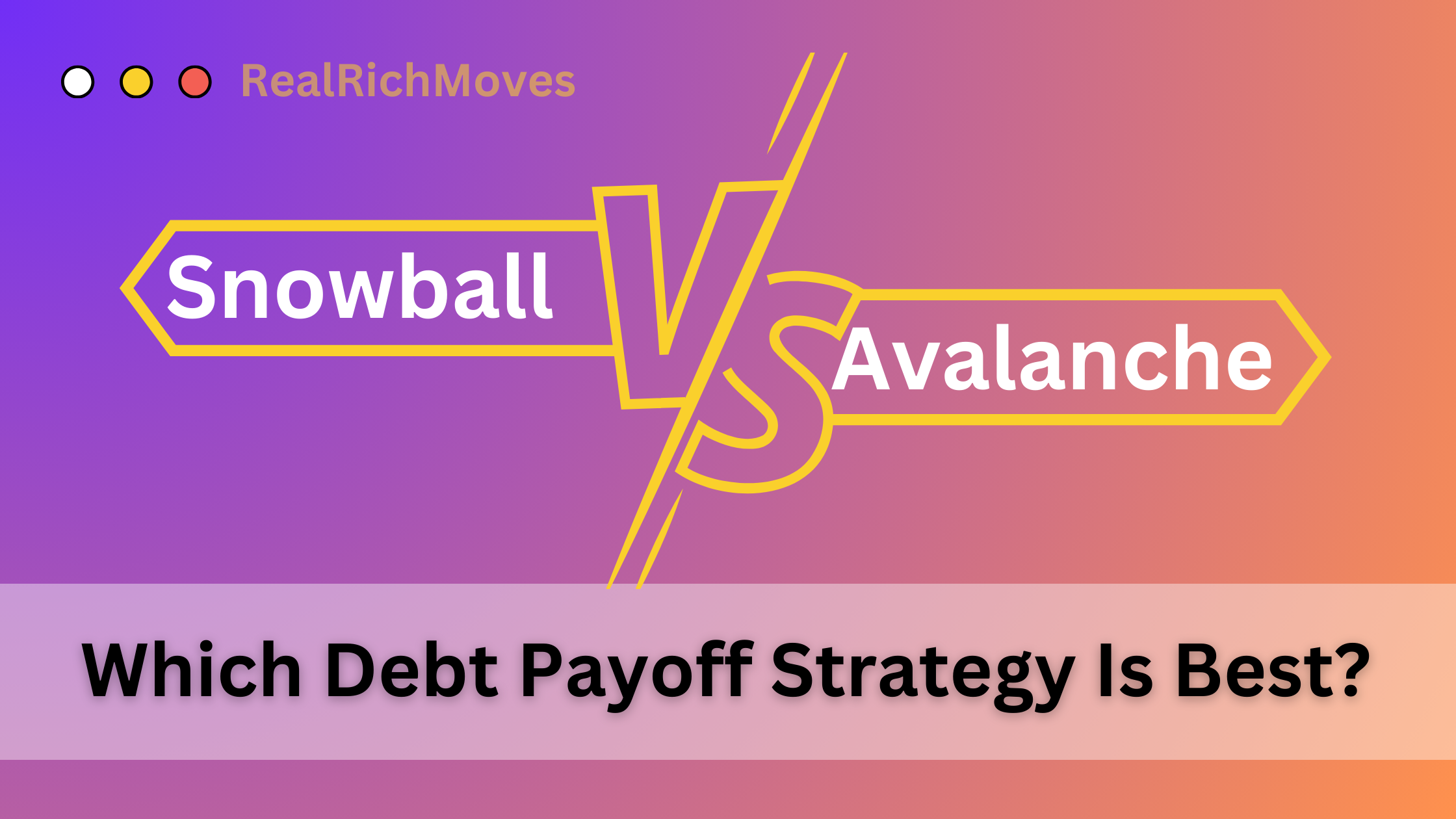Drowning in Debt? You’re Not Alone (Gen Z Feels It Too)
Okay, real talk. Does it ever feel like you’re just constantly swimming upstream in a sea of bills? Between student loans, credit card swipes, and maybe even that car you had to get to finally escape your parents’ house, the struggle is real, especially for us Gen Z-ers. You are definitely not alone.
The good news is, there are ways to climb out of that pit of financial dread and start working towards that debt reduction we’re all dreaming of. Think of these methods as the cheat codes to your debt payoff strategies, they’re not just some random numbers game.
Today, we’re going to break down two of the most popular debt management methods out there: the Snowball and the Avalanche. We’ll see which one fits your style. Consider this your guide to finally tackling that debt and getting on the path to that sweet, sweet financial freedom, so keep reading! This is about making a smart choice, not just randomly throwing money at the problem.
What’s the Deal With Debt? (A Gen Z Reality Check)
Let’s keep it real; most of us are juggling some form of personal finance debt, right? It’s almost like a rite of passage for Gen Z. We’re talking about those pesky student loans that seem to follow us everywhere, those tempting credit card debt that came with a few too many online shopping sprees, or maybe even a car loan that made you finally feel like an adult.
It’s easy to feel overwhelmed, but trust me, you’re not stuck. There are actionable steps we can take, and many strategies that Gen Z can use to get out of debt faster. It’s about figuring out what works best for you and your situation. So, let’s get into it! We’re not here to shame anyone, just to help.
Now that we’ve acknowledged the debt elephant in the room, let’s get into the nitty-gritty of the two main debt payoff strategies.
The Snowball Method: Start Small, Get Big Wins
Alright, let’s talk about the Snowball method. Imagine you’re building a snowman—you start with a small ball, right? Then you keep adding more snow, and the ball just keeps getting bigger. That’s kinda the idea with this method.
The Snowball Method is about building momentum. It focuses on tackling your smallest debts first, regardless of their interest rates. It’s all about getting those quick wins to keep you motivated. It’s like getting those easy levels out of the way so you have more energy for the bigger boss battles later. This method is not about the numbers, it’s about your motivation. It makes you feel like you are accomplishing something.
How the Snowball Method Works (Step-by-Step)
So, how does the debt snowball actually work? Here’s the step-by-step breakdown. First, you’re going to list out all of your debts. It does not matter if it’s student loans, credit cards, or your “buy now pay later” bills. List them all from the smallest balance to the largest, no matter the interest rate.
Next, you make your minimum payment on all of your debts, except for the smallest one. Then, you throw every extra dollar you can find at that smallest debt. Once that debt is paid off, you take the amount you were paying on that debt and add it to the payment you are making towards your new smallest debt. It’s like a snowball rolling down a hill, growing bigger and faster as it goes. This method is designed to provide motivational for debt payoff.
It might seem simple, but the psychological boost of eliminating those small debts can do wonders for your motivation. Seeing your number of debts shrink is a great motivator to keep going. This is a big part of this method, which is an important factor when you think of your personal finance debt.
Pros of the Snowball Method (Why It’s So Popular)
One of the biggest reasons the Snowball method is so popular is because it’s a total motivation machine. It gives you those quick wins early on. Imagine crossing off those debts from your list, one by one. It’s like leveling up in a game! This feeling of progress keeps you engaged and makes you want to keep going on your debt free journey using snowball method.
Plus, it creates momentum, and encourages consistency. You start small, and you get into the habit of putting money towards your debt every month. The pros and cons of the debt snowball are pretty clear. For those who need that immediate sense of accomplishment, this method is gold. If seeing visible results is what fuels you, the snowball might be your best bet.
Cons of the Snowball Method (Where It Might Fall Short)
Okay, let’s be real, the Snowball method isn’t perfect, there are a few cons of the debt snowball. It might not be the fastest route to debt repayment. By focusing on the smallest debts, you might end up paying more in interest overall, especially if those small debts have lower interest rates compared to your bigger ones.
For example, imagine you have a small debt with 5% interest and another bigger one with 20%. With the snowball method, you’d be tackling the 5% debt first, instead of that high-interest 20% one. This means that you could end up paying extra interest on your larger debts in the long run. Being transparent about the limitations is part of building trust here.
Now that we’ve explored the Snowball method, let’s dive into its more mathematically-inclined cousin: the Avalanche method.
The Avalanche Method: Tackle High-Interest Debt First
Now let’s switch gears and talk about the Avalanche method. Think of this method like being a strategic gamer. Instead of going for the easy wins, you focus your energy on taking down the big, bad boss first. With the Avalanche method, we prioritize paying off the debts with the highest interest rates first.
It’s all about being smart about your finances. We will tackle the debts that are costing you the most money over time. It is a more efficient way to deal with debt avalanche. It’s the financially savvy approach. This approach makes sense in terms of optimizing how you’re paying off debt.
How the Avalanche Method Works (The Numbers Game)
How does this actually work? It’s all about the numbers. Just like we did with the Snowball, you need to list out all your debts. You have to include everything, from your student loans to those annoying credit cards.
Now, instead of listing them from smallest to largest, list them from the highest interest rates to the lowest. You’re going to pay the minimum payment on all your debts, except the one with the highest interest. Throw every extra dollar you can find at that high-interest debt. Once that debt is done, you apply that payment to the next-highest-interest debt on your list. This is how we get rid of the debt with high interest first.
It’s all about being strategic. The how does the avalanche method work approach prioritizes the high-interest debt, you’ll pay less overall in the long run. You’re saving money, by focusing on the debts that are costing you the most in the long run. This way, you can start to have financial freedom sooner.
Pros of the Avalanche Method (Maximum Savings)
The biggest advantage of the Avalanche method? It can save you major bucks on interest payments in the long run. By tackling high-interest debts first, you’re essentially stopping the bleeding on the debts that are costing you the most. You’ll often find this method leads to the fastest way to get out of credit card debt, and a faster overall debt repayment.
It’s like cutting out the highest expenses first; you’ll see a significant difference over time. This method is efficient and can make a difference in the long term. The pros and cons of debt avalanche make it clear that it’s a financially smart move. It’s about making your money work harder for you.
Cons of the Avalanche Method (Patience Is Key)
The biggest drawback? It requires more patience. You’re not going to get those immediate, feel-good wins that you get from the Snowball method. It might take you a while to see those early debts disappear. This can sometimes lead to discouragement. The cons of the debt avalanche are important to consider.
It’s the trade off, you are more likely to save money, but it may take longer to feel that sense of momentum. You have to really commit to this method to stay consistent. If you get discouraged easily when you don’t see results right away, you might struggle with this method. It’s all about your personality and your preferences. That’s why it’s important to understand these pros and cons of debt avalanche.
Alright, now that we’ve explored both methods, let’s get into the good stuff: which one is actually the best for you?
Snowball vs. Avalanche: Which Debt Payoff Strategy Is Right for YOU?
Okay, here’s the truth: there’s no magic, one-size-fits-all solution when it comes to paying off debt. Both the Snowball and Avalanche methods work, but the “best” method depends on your personality, your financial situation, and how you are motivated.
It’s like choosing your favorite ice cream flavor. Is the debt payoff method is right for me? Do you like the quick wins of a chocolate sundae (Snowball), or are you more into the long-term satisfaction of a double scoop of pistachio (Avalanche)? Think about what will keep you engaged and motivated to stay on track. For instance, what are your snowball vs avalanche for student loans concerns?
When to Choose the Snowball Method (Motivation Wins)
The Snowball method might be your best bet if you are someone who is easily discouraged, or maybe you need those little wins to keep going. If you get overwhelmed easily, tackling those smaller debts first could be a great confidence boost for you. Sometimes, you just need to get that instant gratification feeling. The snowball method motivation is a huge reason why people prefer this method.
It’s like clearing out the clutter in your room. Once the small things are gone, it feels much easier to deal with the larger ones. If you’re someone who gets their motivation from those little wins, snowball is for you! This approach builds a sense of achievement which keeps you on track to complete your debt free journey.
When to Choose the Avalanche Method (Numbers Rule)
On the flip side, the Avalanche method might be a better fit if you are disciplined, patient, and focused on saving as much money on interest payments as possible. If you don’t mind waiting to see those quick wins, the Avalanche method may be the better option for you. The avalanche method motivation is financial efficiency.
You might like to see that you’re not losing more money through interest. If you’re motivated by the numbers, the Avalanche method will make sense for you. This method is about maximizing your money by eliminating high interest debt first.
Real-Life Examples and Case Studies (Gen Z Scenarios)
Let’s take a look at some real-life scenarios. Let’s say you’re a typical Gen Zer with a mix of debts. You might have $2000 in credit card debt at 20% interest, $5000 in student loans at 7% interest, and a $500 personal loan at 10% interest.
With the Snowball method, you’d start by tackling the $500 loan first. This will be fast, which might motivate you to keep going. With the Avalanche method, you’d start with the $2000 credit card debt because of its 20% interest rate. This would save you the most in interest long term. There are many online debt payoff calculator snowball vs avalanche that can show you exactly how much you can save.
Another example, maybe you have a small personal loan of $300 at 5% interest and a $5000 student loan at 8%. Snowball would have you pay off the small personal loan, while avalanche would tackle your student loans first because they cost more in interest.
The right method depends on your personality and preference for motivation vs. saving. Choosing the best debt payoff strategy for beginners is about making a conscious and informed decision.
A Quick Comparison Table
| Feature | Snowball Method | Avalanche Method |
| Debt Prioritization | Smallest balance first | Highest interest rate first |
| Motivation | Quick wins, psychological boost | Saving money on interest |
| Speed of Payoff | Might be slower overall | Potentially faster overall |
| Cost of Interest | Might pay more interest in the long run | Can save the most on interest |
| Best For | Those who need early wins to stay motivated | Those who are disciplined and math-focused |
Alright, so you’ve got the strategies down. But, there’s a few more things you can do to really level up your debt game.
Level Up Your Debt Game: Extra Tips for Gen Z
Remember, getting out of debt is a marathon, not a sprint. So, here are some additional tips to keep you going on your journey. Let’s talk about the extra tips to make this journey as smooth as possible.
Create a Budget (It’s Not As Scary As It Sounds!)
Alright, I know, the B-word. Budgeting. It’s not as scary as it sounds. A budget isn’t there to restrict your fun. It’s there to make you aware of where your money goes, it just means you have a plan. It’s the foundation for financial planning for debt. You want to start to track your income and expenses so you know how much extra you can allocate towards your debt.
Look at your spending, and find areas where you can make adjustments. Maybe you can cut down on eating out, those online shopping trips or your subscriptions you barely use. This is the foundation of a strong financial plan and the first step to how to create a debt payoff plan.
Track Your Spending (Know Where Your Money’s Going)
It’s easy to lose track of where your money disappears. Try using a budgeting app, a spreadsheet, or even just a notebook to track your spending. Sometimes just seeing where your money goes can be an eye-opener. You might find small ways to cut expenses that you weren’t aware of.
Are you constantly spending on coffee, or ordering takeout? When you see where the money goes you might start cutting down on the unnecessary expenses. This is a critical part of managing your finances. When you track your spending, you can start to notice what expenses you should avoid.
Find Ways to Cut Expenses (Every Little Bit Helps)
Take a good look at your monthly expenses. There are many different opportunities to save a little money here and there. Little expenses add up. Small changes, like brewing your own coffee, or making a lunch at home instead of eating out, can make a real difference over time.
Look into canceling subscriptions that you don’t use. You might be spending a good chunk of money on streaming services you don’t even use, or subscriptions you forgot you even had. This is the best way to start saving on a budget. It doesn’t take a lot to start saving, just a few small changes to make a difference.
It’s about finding those small expenses that add up, and cutting them down. These small savings can be used to put towards your debt management.
Explore Additional Income Streams (The Side Hustle Hustle)
Another option to pay off debt is to bring in additional income. Maybe it is time for a side hustle. Can you deliver food, drive for a rideshare, or sell your creative work online? The world is your oyster. This extra money can accelerate your debt repayment efforts. This can help to make your debt payoff journey much faster.
There are so many options out there now. Don’t be afraid to explore your options. This is the age of the side hustle, so go out there and explore different opportunities to make some extra cash. Every bit of extra income will help to pay off your debt faster.
Consider Debt Consolidation (If It Makes Sense)
If you have multiple high-interest debts, like credit cards, you could explore the option of debt consolidation. This involves taking out a new loan to pay off all of your smaller debts, leaving you with one monthly payment and one interest rate. This is a good option to simplify your payments. It’s important to do your research before deciding if this option is right for you.
Okay, we’ve covered a lot today! Let’s wrap it all up.
Take Control of Your Debt (You’ve Got This!)
Whether you decide to go with the Snowball or the Avalanche method, it’s important to remember that you are in control of your debt and best debt payoff strategy. Both methods work, it just depends on which one you resonate with more. The most important thing is that you pick one and stay consistent. Don’t let it overwhelm you.
This process is about taking control of your finances. It’s your life, so take charge! It’s a marathon, not a sprint. So, keep going, stay consistent, and you’ll eventually reach your financial goals. Start your debt free journey today! You’ve got this! This will make you closer to achieving your financial freedom.
Your Debt Free Journey Starts Now (Gen Z Power!)
This is not the end of your journey. It is just the beginning. We all face debt but the way you deal with it is what matters. You have the power to make a difference. You are the one who can take control of your finances and pave the way towards a brighter future.
Now it is time for you to take the step. Go out there and make those dreams a reality. We believe in you! Now go out there and crush those debts! We are in this together, let’s go!
Explore My Latest Debt Hacks Tips and Tricks!



